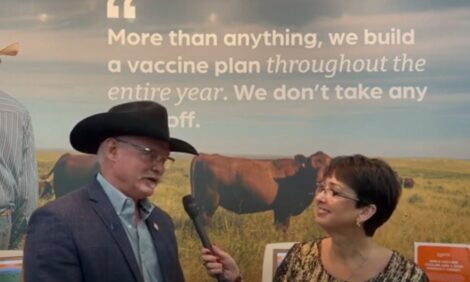



NCBA: Biosecurity plans for all types of cattle operations
Learn the first steps to develop a biosecurity plan for your beef farm or ranch or feedyardIn addition to commercial exhibitors, National Cattlemen’s Beef Association staff members were busy and visible during the 2022 Cattle Industry Convention and NCBA Trade Show. Dr. Julia Herman, NCBA beef cattle specialist veterinarian, addressed the importance of biosecurity and biosecurity resources available to cattle producers with The Cattle Site’s Sarah Mikesell.
“When the Beef Quality Assurance program developed our biosecurity plan, we looked at what the poultry and swine industries were already doing,” said Herman. “They’re vertically integrated and biosecurity is part of their daily operations. The beef industry is more segmented and we have a cow/calf sector, stockers and feedyards and each one of those has a different way to prevent disease from coming onto their operations.
“What we wanted to do with this biosecurity plan was to provide a set of guidelines and anybody within the beef industry from a hobby farmer all thew way up to a 10,000-head feedyard, can fill this out and at least start developing their biosecurity plan. We go through topics like animal movement, how you get premise identification numbers and look at keeping your feed safe and developing a map of your operations for entrances and exits. So, there are a lot of details that go into a biosecurity plan. We want to encourage producers to take that extra step to make this plan.”
Getting started on a biosecurity plan is straightforward, Herman said.
“One of the first things they can do is go to our BQA website at bqa.org. They can download our biosecurity plan. It’s a fillable PDF where they can fill it out online or print it and fill it out. We also have supplemental templates they can use, like visitor logs or checklists,” she said.
She added producers can go through their operations and determine how often they get feed or semen delivered, as well as other people coming onto a location. NCBA also encourages producers to work with their veterinarians as they have a holistic approach and are always searching for ways to protect animals and improve animal health. Biosecurity and herd health go hand in hand and veterinarians can help producers ensure they’re not missing anything with their plans.
“When you write things down, it challenges you to evaluate what you’re doing and consider how to make it better,” Herman said. “This is the foundation of BQA. We are always striving for improvement. This is one way our producers can be empowered to make that improvement.”
Biosecurity plans must be dynamic as biosecurity and disease hazards evolve with time.
“This is one of the things I learned from an international event I worked with,” Herman said. “The speaker told me that biosecurity is a verb because it’s always moving. It’s always adapting. We’ve all learned this is true through COVID. Our biosecurity yesterday is not the same as what we’re doing today. It’s not the same on a cattle operation. So, this plan, when you fill it out today, it’s not going to be the same in six months when you reevaluate it. Hopefully, you’re changing it because you’re improving.
“All of our cattle producers across the country and the world are adaptive. This is another way they can show how they can adapt and continue to take really good care of their cattle.”
Herman summarized by noting the importance of keeping biosecurity plans up to date because feed sources change, workers change and cattle coming on to the place change. Plus, should a foreign animal disease such as foot-and-mouth disease break out, knowing potential carriers and exposures will be critical.


